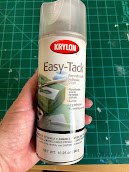Technically, cling stamps are made from a different material than wood-backed rubber stamps, but if you're looking to make the change, it's relatively easy.
Why on earth would you want to do this?
First, it saves a lot of space. In fact, I think it takes up only a third of the space that wood-backed stamps take when you include the side of the binder you put them in.
 |
| Stamp Platform |
Second, if you like using a stamp platform toget precision stamping, you need to get them off the wood.
Third, it's easy to organize them into categories for storage.
You'll need
- A microwave
- A thin knife or craft knife
- A cup of water
- Wood-backed Stamps
- Acetate, transparency, or glossy photo paper
- Cheap sheet protectors
- A cheap binder
- Patience
- Optional: Easy-Tack removable adhesive
Instructions
First, put your cup of water in the microwave. Then place your stamp either wood side down or on its side. I like to wet the stamp first to avoid having it dry out.
Then set the time on the microwave.
For small stamps, I used about 10 seconds.
Medium got about 15.
Large was close to 19 seconds.
It's better to err on the side of caution and use less time. You can always put it in for a little longer.
It just needs to be warm enough to loosen the adhesive holding it on the wood block.
Remember, all microwaves are different, so you may have to adjust the timing.
Once I removed it from the microwave, I used my thinnest knife to pull up the edges all the way around the stamp.
From there, I was usually able to carefully peel the stamp off of the wood. Again, you can always zap it for a few more seconds if it's being difficult.
When I had finished pulling all the stamps off the wood blocks, I then put them onto the acetate. When I ran out of acetate, I used glossy photo paper. These then went into the sheet protectors and then into the binder.
For stamps that don't have any stick to them, you can spray a little Easy-Tack or a comparable adhesive to get them sticky.
Tips
Put down wax or pastry paper. Stamps will be sticky.
If you get the Easy-Tack on your hands, you can get it off with petroleum jelly. I found that rubbing alcohol and soap weren't helpful.
Remember to peel the stamp off the wood carefully. It's best to go a little slow and peel from several different angles.
All stamps will be a little different to work with based on age, use, and materials.
To remove Easy-Tack from your hands, use petroleum jelly. I tried rubbing alcohol and dish soap, but they were no match for the power of Easy-Tack.
 |
All the remaining wood!
That's a lot of storage space saved! |
Luckily. all this wood will be recycled as I will be giving it to a friend who does a lot of wood working.
























